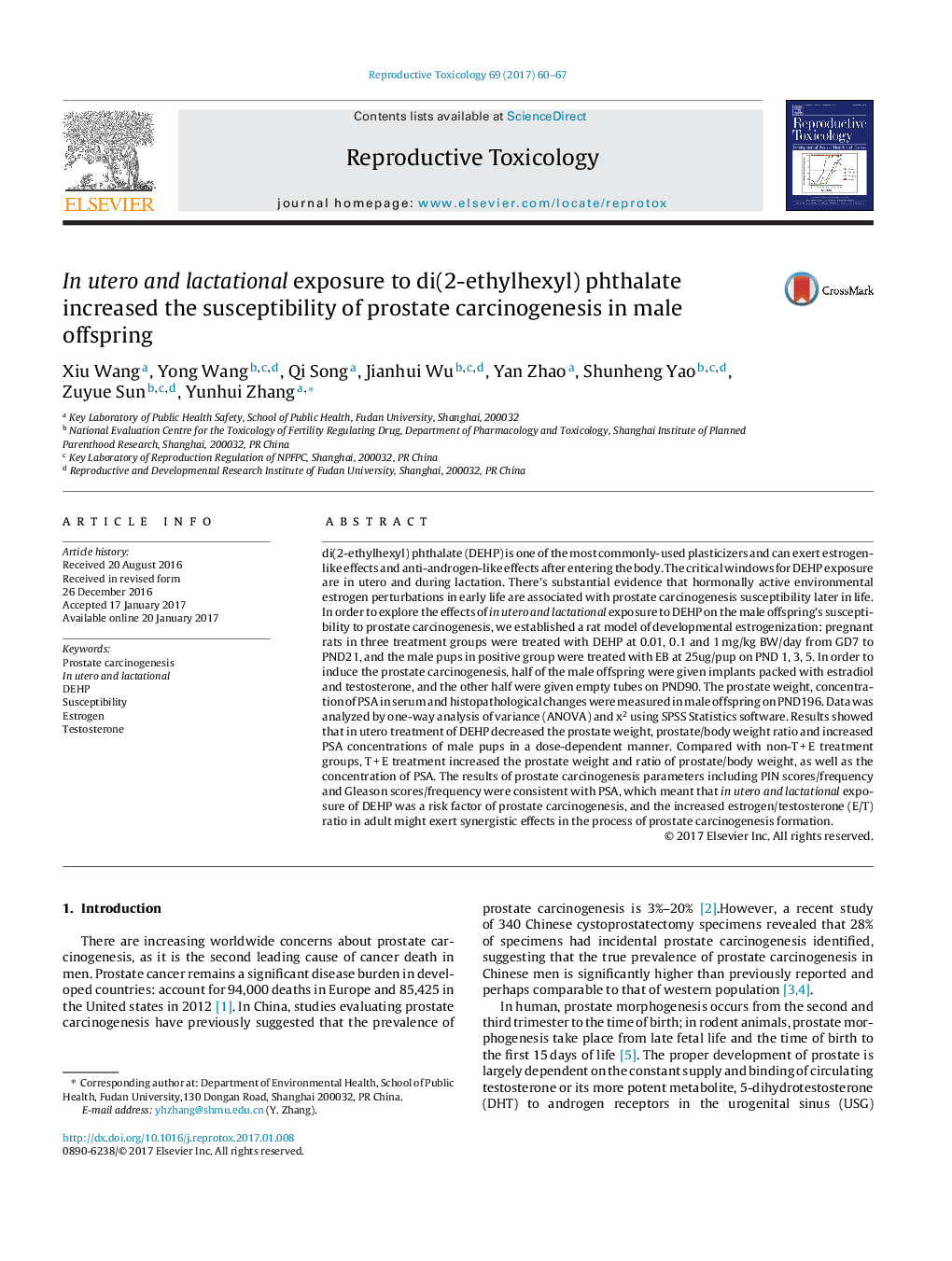| کد مقاله | کد نشریه | سال انتشار | مقاله انگلیسی | نسخه تمام متن |
|---|---|---|---|---|
| 5561581 | 1562150 | 2017 | 8 صفحه PDF | دانلود رایگان |
- We established a rat model of developmental estrogenization.
- The weights of Prostate, PSA concentration in serum, PIN scores/frequency and Gleason scores/frequency were measured in male offspring.
- In utero and lactational exposure of DEHP was a risk factor of prostate carcinogenesis.
- The increased estrogen/testosterone (E/T) ratio exerted synergistic effects in the process of prostate carcinogenesis formation.
di(2-ethylhexyl) phthalate (DEHP) is one of the most commonly-used plasticizers and can exert estrogen-like effects and anti-androgen-like effects after entering the body. The critical windows for DEHP exposure are in utero and during lactation. There's substantial evidence that hormonally active environmental estrogen perturbations in early life are associated with prostate carcinogenesis susceptibility later in life. In order to explore the effects of in utero and lactational exposure to DEHP on the male offspring's susceptibility to prostate carcinogenesis, we established a rat model of developmental estrogenization: pregnant rats in three treatment groups were treated with DEHP at 0.01, 0.1 and 1Â mg/kg BW/day from GD7 to PND21, and the male pups in positive group were treated with EB at 25ug/pup on PND 1, 3, 5. In order to induce the prostate carcinogenesis, half of the male offspring were given implants packed with estradiol and testosterone, and the other half were given empty tubes on PND90. The prostate weight, concentration of PSA in serum and histopathological changes were measured in male offspring on PND196. Data was analyzed by one-way analysis of variance (ANOVA) and x2 using SPSS Statistics software. Results showed that in utero treatment of DEHP decreased the prostate weight, prostate/body weight ratio and increased PSA concentrations of male pups in a dose-dependent manner. Compared with non-TÂ +Â E treatment groups, TÂ +Â E treatment increased the prostate weight and ratio of prostate/body weight, as well as the concentration of PSA. The results of prostate carcinogenesis parameters including PIN scores/frequency and Gleason scores/frequency were consistent with PSA, which meant that in utero and lactational exposure of DEHP was a risk factor of prostate carcinogenesis, and the increased estrogen/testosterone (E/T) ratio in adult might exert synergistic effects in the process of prostate carcinogenesis formation.
Journal: Reproductive Toxicology - Volume 69, April 2017, Pages 60-67
